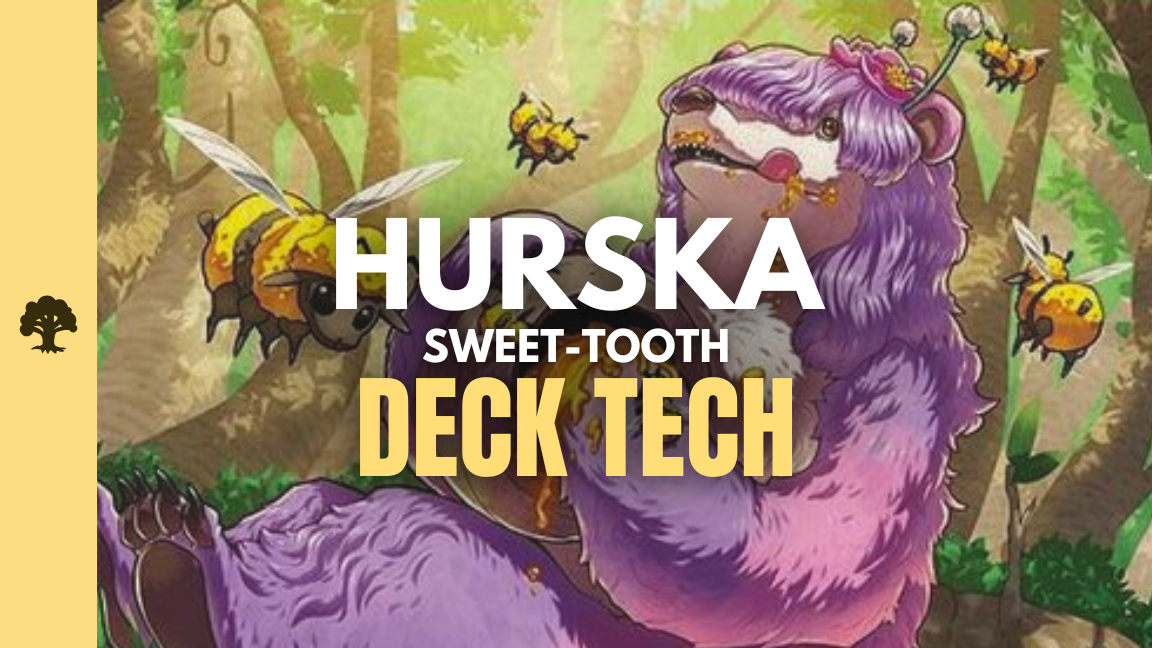Hurska Sweet-Tooth Commander Deck Tech

New Year, New Perspective
One of my favorite articles I've written was a Gaddock Teeg
That article was about starting off the new year on a positive note, breaking through my negative preconceptions about Hate Bears decks and gaining an understanding and appreciation for them. This article is also about a bear, and also about an ability I happen to... strongly dislike.
Life gain decks tend to bother me because they: extend games, exacerbating issues with timing and technology; lead to poor threat analysis due to missing that life disparity can be as threatening as board state; and durdle a lot, taking tons of game actions but not actively advancing gameplans or contributing towards ending the game in a reasonable time period or exciting way.
But like Gaddock Teeg
Pump Spells
Hurska is a sweet commander, both in the literal, having a sweet tooth and gorging itself on Food, a la Yogi Bear and Boo Boo, and in the figurative, having two abilities that feed each other, also both literally and figuratively. When Hurska enters, it makes a Food.
It can pump a creature for either a green or white mana, any time we gain life, equal to the amount of life gained. At a minimum, we can pop the Food to proc the pump for a three-mana Giant Growth
Unlike last week's Rube Goldberg combo deck, this is a more typical synergy-laden deck. We're trying to use incidental life gain in the jobs our deck already does, in order to accrue advantage. The life gain pieces then pump our whole team, such as Archangel of Thune
Ramp
This deck is deceptively mana-hungry, but having green as a main color helps to mitigate that. We need mana to cast spells or to crack Food as well as to activate our commander's ability. Thankfully, Sam, Loyal Attendant
Buried amongst our litany of typical mana dorks is Accomplished Alchemist
In the situations where we have an excess of Food and need more mana, Jaheira, Friend of the Forest
Return from the Wilds
Draw
Shamanic Revelation
Alhammarret's Archive
Celestine, the Living Saint
Pulse of Murasa
Removal
Heliod's Intervention
As a Midwesterner, I knew I had to include Stew the Coneys
The general plan is to ramp into a developed board, gain incidental life through the spells and Food we create, and then bash through for large chunks of damage by leveraging our wide board into creating positive attacks, which we can swing with our commander's ability.
Hurska Sweet-Tooth Commander Deck Tech
View on ArchidektCommander (1)
Creatures (31)
- 1 Academy Manufactor
- 1 Accomplished Alchemist
- 1 Archangel of Thune
- 1 Astrid Peth
- 1 Avacyn's Pilgrim
- 1 Birds of Paradise
- 1 Blossoming Bogbeast
- 1 Celestine, the Living Saint
- 1 Delighted Halfling
- 1 Disciple of Freyalise // Garden of Freyalise
- 1 Elanor Gardner
- 1 Elvish Mystic
- 1 Esper Sentinel
- 1 Exemplar of Light
- 1 Fyndhorn Elves
- 1 Gilded Goose
- 1 Heliod, Sun-Crowned
- 1 Jaheira, Friend of the Forest
- 1 Kutzil, Malamet Exemplar
- 1 Lathiel, the Bounteous Dawn
- 1 Llanowar Elves
- 1 Nykthos Paragon
- 1 Peregrin Took
- 1 Prize Pig
- 1 Prosperous Innkeeper
- 1 Rosie Cotton of South Lane
- 1 Sam, Loyal Attendant
- 1 Sierra, Nuka's Biggest Fan
- 1 Sovereign Okinec Ahau
- 1 The Gaffer
- 1 Tireless Provisioner
Instants (17)
- 1 Cosmic Rebirth
- 1 Fortifying Draught
- 1 Fracturing Gust
- 1 Get Lost
- 1 Heliod's Intervention
- 1 Hunter's Insight
- 1 Inscription of Abundance
- 1 Light of Hope
- 1 Momentous Fall
- 1 Nature's Claim
- 1 Pawpatch Formation
- 1 Pulse of Murasa
- 1 Return of the Wildspeaker
- 1 Revitalize
- 1 Stew the Coneys
- 1 Stroke of Midnight
- 1 Swords to Plowshares
Sorceries (8)
Artifacts (2)
Enchantments (1)